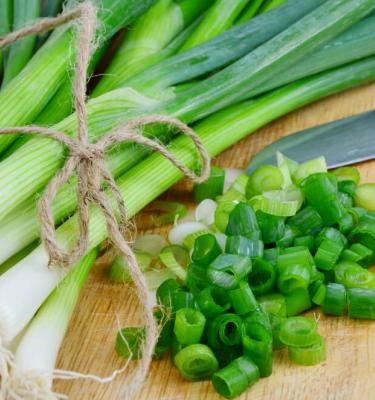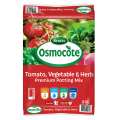

Growing Spring Onions
Spring onions (also known as green shallots and green bunching or salad onions) are a delicious addition to a whole range of dishes, from summer salads to stir-fries. Harvested before the bulbs start to swell, they have a milder flavour than mature onions and the whole plant, bulb and leaves, can be used in cooking. Quick to grow, spring onions are ideal as a filler crop between slower growing vegetables. The botanical name is Allium fistulosum.
Spring onions varieties
Growing spring onions or salad onions from seed gives you a wide range of varieties to choose from. Here are a few popular varieties to look out for:
- Bunching Ishikura - long white stalks but no bulbs at the base.
- Evergreen Trident – mild flavour and grows well in full sun.
What you'll need to grow spring onions:
- Rake
- Garden spade
- Garden fork
- Trowel
- Spring onion seeds
- Soil improver or well weathered manure
- Controlled or slow release fertiliser
For growing spring onions in pots:
- Container with drainage holes
- Vegetable and herb potting mix
Sowing spring onions
Spring onions are easy to grow from seed and will grow in any fertile, well-drained soil, in full sun. For a continual harvest of spring onions in summer, sow at three-week intervals from September to February. To grow spring onions indoors over winter, sow in March and harvest in spring.
- Prepare the soil in autumn for spring sowing by clearing any weeds and dig in soil improver or manure to improve drainage.
- A couple of weeks before sowing, rake in some slow or controlled release fertiliser for vegetables. Tread the soil down and rake it smooth, so that the surface has a fine, crumbly texture.
- Using a stick, the tip of a trowel or the corner of a rake head, draw shallow channels (known as drills) in the ground 0.5cm deep and 15cm apart.
- Sow the spring onion seeds thinly in the drills and cover over with soil.
- Sow new seeds every three weeks for a continual supply through summer.
Growing spring onions in pots
If growing spring onions in pots, choose a container with good drainage holes and fill it with good potting mix. Scatter seed over the surface and cover with 1.5cm of mix. Water just enough to moisten without saturating the pot.
Spring onion seedlings are also available from garden centres and nurseries in punnets, ready to be transplanted into the vegie garden. Prepare the soil as for seed sowing but make the drills about 4cm deep. Lay spring onion seedlings individually against one side of each drill, then cover over the roots carefully. Water in well. The seedlings will stand up on their own as they establish and start to grow.
How to care for spring onions
Water during dry periods, and water container-grown spring onions regularly to keep the soil or potting mix moist. Don't over-water, as this could leave the plants prone to diseases like downy mildew.
Keep the patch weed free by hand weeding regularly. Spring onions have shallow roots which could be damaged by hoeing.
How and when to harvest spring onions
Spring onions are ready to harvest around eight weeks after sowing, when the plants are around 15-20cm tall and the bulbs are still small, less than 2.5cm across. Pull the plants up by hand as you need them, using a hand fork or trowel to help if needed.
Storing spring onions
Spring onions are best used soon after harvesting, but they can be stored in sealed plastic bags in a fridge for up to two weeks.
Alternatively, place your harvested spring onions in a jar of water to keep them fresh until you are ready to use them.
Common spring onion diseases
| Onion white rot |
Onion white rot is a soil-born fungus that causes leaves to yellow and wilt, and bulbs to rot. Control methods include:
|
|---|---|
| Onion downy mildew |
Downy mildew is a fungal disease that can affect the leaves of spring onions, causing blotches on the leaf surface. In severe cases, leaves shrivel and fall off, and plant growth is stunted. It is more common in wet weather.
|



